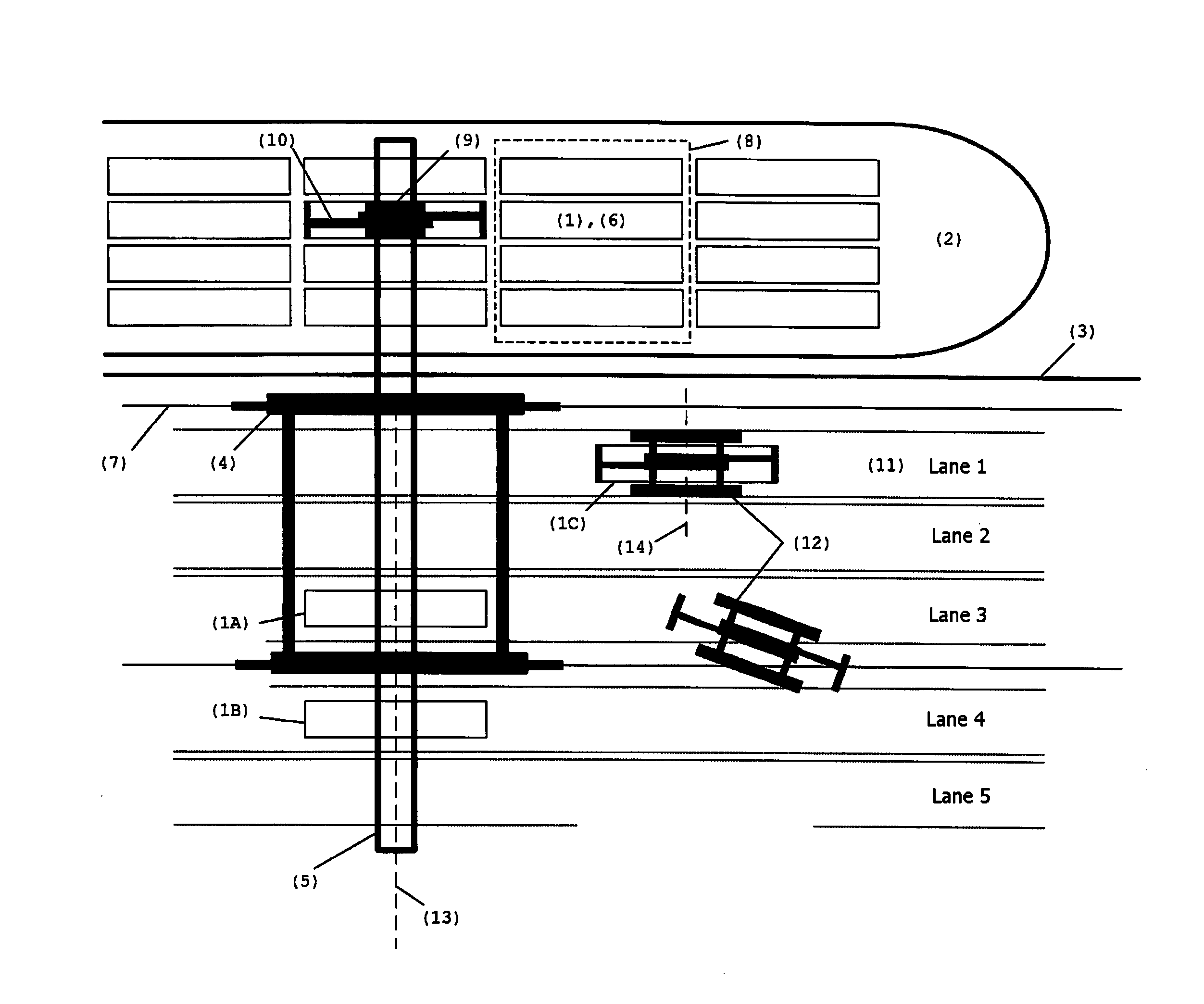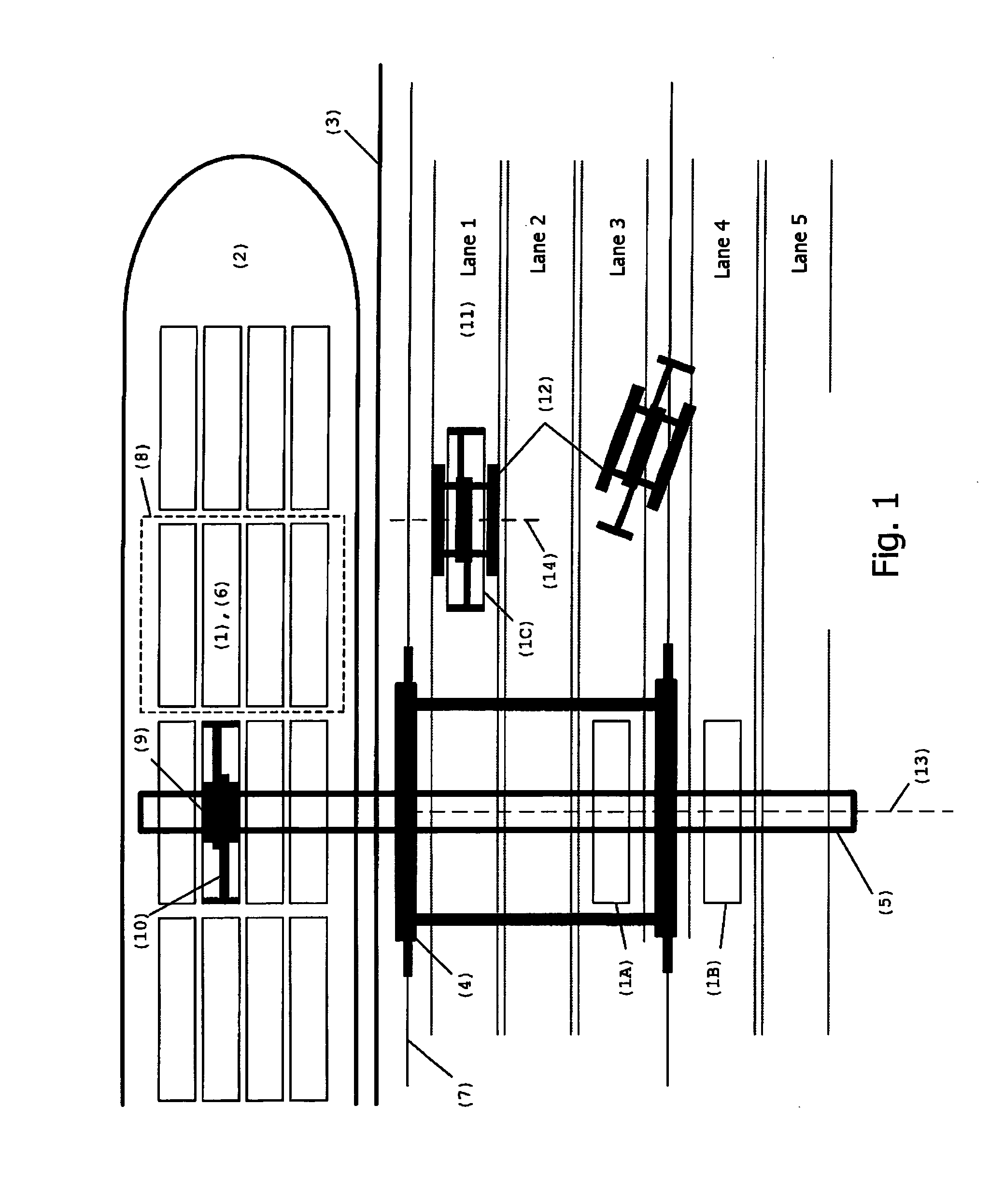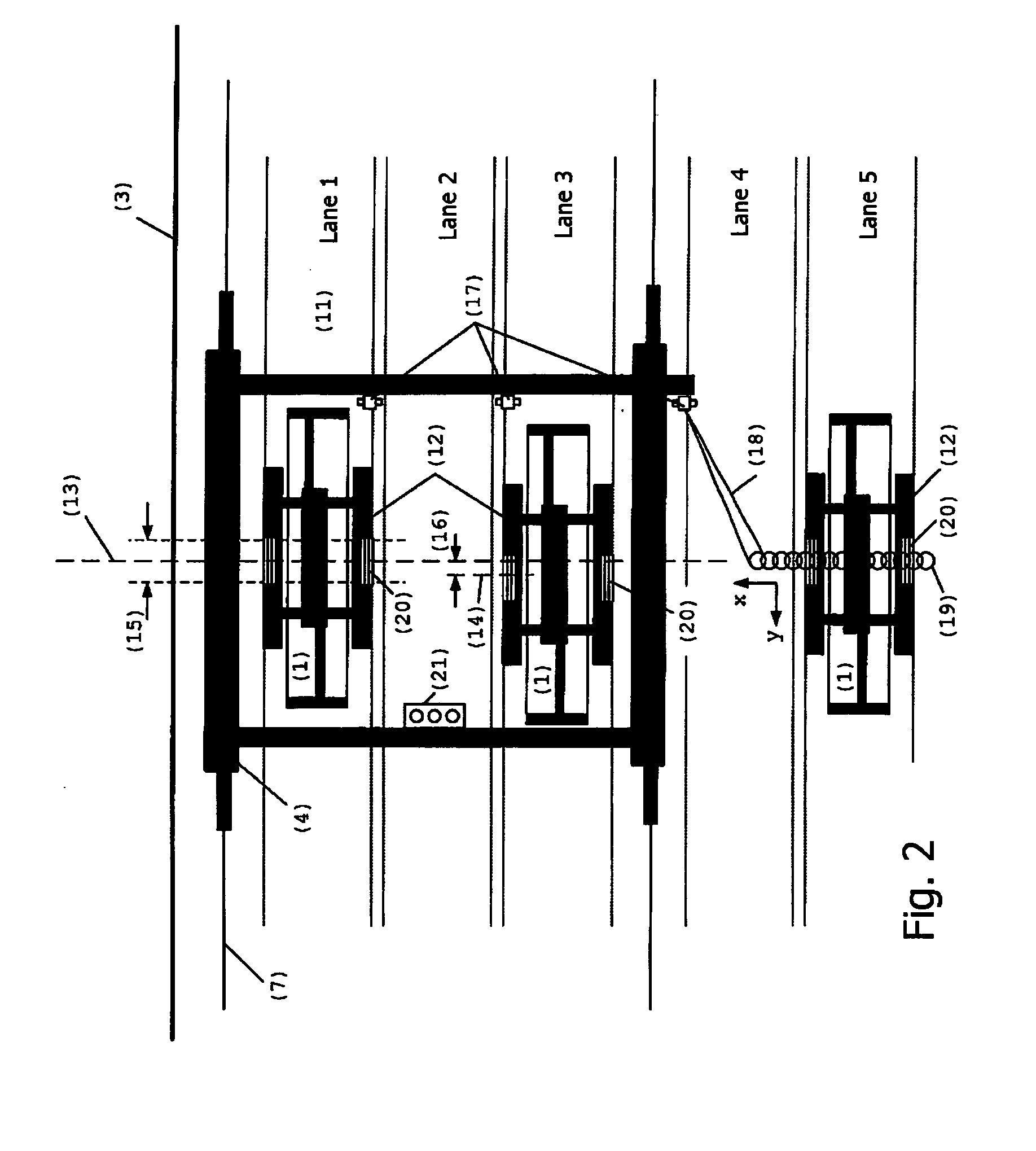System for the identification and/or location determination of a container handling machine
a container and location determination technology, applied in the field of system for the identification and/or location determination of container handling machines, can solve the problems of large blind zone of gps satellite, high unreliable method of satellite positioning, and cumbersome position errors gathered by gyroscopes and odometers
- Summary
- Abstract
- Description
- Claims
- Application Information
AI Technical Summary
Benefits of technology
Problems solved by technology
Method used
Image
Examples
Embodiment Construction
[0028]A solution of the invention for the identification of a container handling machine and / or for determining the correct location of a container handling machine is presented in the appended claim 1.
[0029]The invention will now be described in more detail with reference to the accompanying drawings, in which
[0030]FIG. 1 shows unloading or loading of a container ship (2) by means of a quay crane (4);
[0031]FIG. 2 shows lanes (11) underneath a quay crane (4) with container handling machines (12), for example a straddle carrier, bringing containers (1) therein;
[0032]FIG. 3 shows one way of implementing a reflector (20) of the invention;
[0033]FIG. 4 is a lateral view of lanes (11) underneath a quay crane (4) with container handling machines (12), for example a straddle carrier, bringing containers (1) therein;
[0034]FIG. 5 shows one possible method of implementing the invention;
[0035]FIG. 6 shows one possible algorithm for implementing the invention; and
[0036]FIG. 7 shows one way of im...
PUM
 Login to View More
Login to View More Abstract
Description
Claims
Application Information
 Login to View More
Login to View More - R&D
- Intellectual Property
- Life Sciences
- Materials
- Tech Scout
- Unparalleled Data Quality
- Higher Quality Content
- 60% Fewer Hallucinations
Browse by: Latest US Patents, China's latest patents, Technical Efficacy Thesaurus, Application Domain, Technology Topic, Popular Technical Reports.
© 2025 PatSnap. All rights reserved.Legal|Privacy policy|Modern Slavery Act Transparency Statement|Sitemap|About US| Contact US: help@patsnap.com



